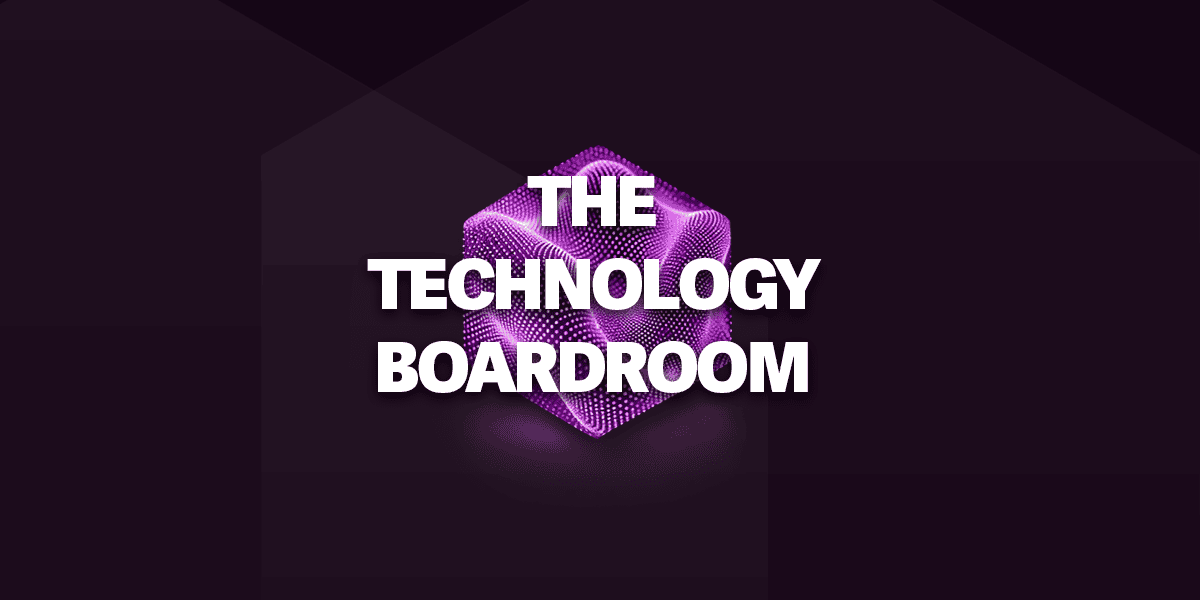In today’s digital age, the adoption of new technology and modern IT solutions is no longer a luxury but a necessity. For small to medium businesses, this transition can be particularly challenging.
In our latest blog, Business Change and Adoption Lead, Suzanne O’Neill, offers a guide for small to medium businesses that outlines the challenges of adopting new technologies and the solutions that can help embrace transformative technology for long-term success.
The case for technology adoption
Change is inevitable, especially in the IT sector. In a world racing to embrace groundbreaking AI tools and seeking to cut costs and labour requirements at every opportunity, adopting new technologies has become a priority for organisations worldwide as they seek to streamline operations, improve productivity and gain a significant competitive edge.
From ChatGPT and AI assistants to Internet of Things (IoT) solutions and automation tools, businesses have never before faced a field of possibilities as wide and as complex as that on offer today. Within each tool lies opportunities and potential to achieve far more with less and in substantially shorter time, while reducing costs simultaneously.
With such technology riches on offer, the challenges of adopting new technology lie in ensuring smooth adoption that causes minimal disruption to operations, and in selecting the right tools that can add additional value to your organisation.
Here is how you can approach it.
The challenges of adopting new technologies
The transition between old and new is a critical period for your organisation, one which can make or break a technology adoption strategy. Being forewarned about likely pitfalls you will face can help manage this transition effectively.
Small to medium-sized businesses often encounter several common challenges during technology adoption:
Attempting technology adoption without qualified change personnel
SMBs may struggle with a shortage of in-house staff who are skilled in end user adoption of new technologies. Without full adoption, return on investment will not be met.
Budget constraints
Financial limitations can restrict the ability to invest in new technologies and can impact the training and development opportunities for existing staff to use these technologies effectively.
Resistance to change
Employees may resist adoption of new technology due to fear of the unknown or the discomfort that comes with changing established workflows and processes.
Change fatigue
Employees often feel overwhelmed by constant changes. This can be exacerbated by factors such as a lack of communication, insufficient support and the absence of a clear vision for the future.
To successfully navigate this transition and avoid the disruptive challenges of adopting new technologies, organisations must first formulate a watertight change strategy.
A change strategy that answers your technology adoption needs
To overcome these challenges, a well-planned change strategy is crucial for successful adoption of new technology. This strategy should outline the steps for implementation, perceived and potential challenges, and the solutions you can employ should you face them. It should also include a timeline for the transition and define the roles and responsibilities of everyone involved.
Developing a change strategy is vital for small to mid-market organisations adopting new technology as it aligns the adoption process with the organisation’s business goals, promoting growth and efficiency. A change strategy ensures a smoother transition from old systems to new technologies, reducing operational disruptions and limiting any negative financial impact of this often-challenging period.
A successful technology adoption change strategy also enhances stakeholder engagement by clearly communicating the benefits and impacts of the change. This in turn helps to address any resistance to change and increases the chances of successful adoption.
Furthermore, an effective change strategy enhances a business’s competitiveness through the effective adoption of new technology, which allows them to offer superior services and products. It supports continuous improvement, giving organisations the flexibility to adapt and evolve with technological advancements. A change strategy also ensures that resources are used efficiently throughout the technology adoption process and helps identify and mitigate potential associated risks.
At its core, a change strategy provides you with a comprehensive approach to transformation that facilitates a strategic and efficient update to new technological systems.
No change strategy: how technology adoption becomes negative
When small to mid-market organisations fail to build and execute a change strategy ahead of new technology adoption, they may face increased resistance from employees. This can lead to lower adoption rates of new solutions and a general dislike or distrust of the new technology – a perfect recipe for the potential failure of the entire technology implementation.
This sequence of events can result in a waste of time, money and effort on technologies that may not align with the primary business needs or objectives. The lack of a structured approach can cause significant disruptions in daily operations, affecting productivity and customer service. Worse still, it also means missing out on opportunities for growth, efficiency and leveraging the new technology itself to gain a competitive edge.
Decisions surrounding adoption of new technology can become reactive rather than proactive, leading to choices that don’t support your organisation’s long-term goals. Organisations may find themselves unprepared for the challenges that come with new technology, such as integration challenges, training needs and security risks. The uncertainty and confusion that often accompany unstrategic change can lead to reduced morale and job satisfaction among employees.
Additionally, without clear goals and metrics, it’s difficult to measure the success of technology adoption, making it hard to justify future investments.
In very stark terms, the absence of a change strategy can undermine the potential benefits of the entire adoption and even jeopardise the organisation’s long-term success.
Creating a vision, setting goals and achieving your technology adoption objectives
Before embarking on the transition, businesses should clearly define their vision, goals, and objectives. The importance of these three markers when adopting new technology lies in their ability to steer the transition in a direction that is beneficial for the business.
The clarity that your vision, goals and objectives offer serves as a compass, guiding your organisation through the complexities of technological change. It ensures that every step taken is in pursuit of a defined outcome, be it improving efficiency, increasing market share or enhancing customer satisfaction.
A well-articulated vision acts as a motivational force, inspiring employees to embrace their new tools and work towards a common purpose. Goals and objectives provide tangible targets that help in tracking progress and evaluating the impact of the technology on the business. They also aid in aligning the technology with the company’s strategic plan, ensuring that the investment contributes to the long-term success of the organisation.
Without a clear vision and goals, the challenges of adopting new technologies can quickly become realised. An organisation’s journey can become directionless and inefficient, with the absence of a defined vision resulting in a lack of overarching purpose guiding the transition and an inertia leading to confusion and a lack of cohesion among your people. Defined goals serve as benchmarks for success, and without them it’s challenging to measure progress or determine the effectiveness of the new technology.
Moreover, a lack of clear objectives can result in misaligned efforts where the technology implemented does not support the actual needs of the business. This can lead to wasted resources, both time and financial, and may even cause frustration and resistance among employees who do not understand the need for change.
A clear vision and well-defined goals are essential for ensuring that the adoption of new technology is purposeful, strategic, and aligned with the business’s long-term objectives. In today’s technology-driven marketplace, they hold the key to a successful digital transformation that can propel an organisation forward.
Training and Development
Training is essential when small to mid-market businesses adopt new technology. Having onboarded your new tools, you must ensure that employees are empowered with the skills and the knowledge to leverage your investment to the maximum. Training ensures a smooth transition to new systems, making your people comfortable and proficient with their new offerings, in turn boosting productivity and aligning the use of new technology with the business’s objectives.
However, if training is not provided, employees may resist the new technology. At worst leading to a potential jeopardising of the initiative from the top down, the lack of proper training can lead at least to inefficient use of technology, increasing the likelihood of errors and reducing overall efficiency. Additionally, employees who feel unsupported and unprepared throughout the change may experience decreased morale and job satisfaction.
Training is not just about learning how to use new technology; it’s a critical step in ensuring that the technology is adopted successfully and contributes positively to the business’s goals. Neglecting training can have significant negative impacts on the organisation’s operations and culture.
Training does not need to be expensive. There are plenty of online training courses available, if you know where to look – and for a small investment at the start, you can future-proof and safeguard your much larger and business-critical main IT investments.
Adoption of new technology on a budget: self-serve advisory services
Self-serve advisory services are an innovative solution for small to mid-market businesses operating on tight budgets that can’t afford extensive Change and Adoption consultations. At Advania, we aim to empower businesses by providing them with the tools and guidance they need to independently navigate the transition to new technologies.
In essence, self-serve advisory services are a smart choice for small to mid-market businesses that are considering new technology adoption while at the same time wanting to maintain control over their budget and time. These services offer a balance of autonomy and expert guidance, enabling businesses to confidently manage their digital transformation journey on a scale that suits them. By leveraging these services, businesses can ensure they are making informed decisions that align with their strategic goals and operational capabilities.
By working with us and gaining the expertise and experience of our team, your organisation’s digital transformation can enjoy the best of both worlds: the knowledge of a leading digital change consultancy together with the institutional knowledge and care of your own business leaders.
The future of technology adoption
Although a significant and often complex step for small to medium businesses, adoption of new technology doesn’t have to be a frightening prospect. While the transition can be challenging, having the right change strategy, support network and resources in place can enable businesses to successfully navigate this change and harness the benefits of digital transformation.
Advania’s Business Change and Adoption Team is equipped to ensure high user adoption of new tools, which is key to securing your return on investment. By understanding your technology adoption desires and helping you develop a clear change strategy, together we can define your vision and outline a clear set of goals and objectives. Working with you, we can set you on the right path to make successful technology adoption a cornerstone of your IT strategy.


















